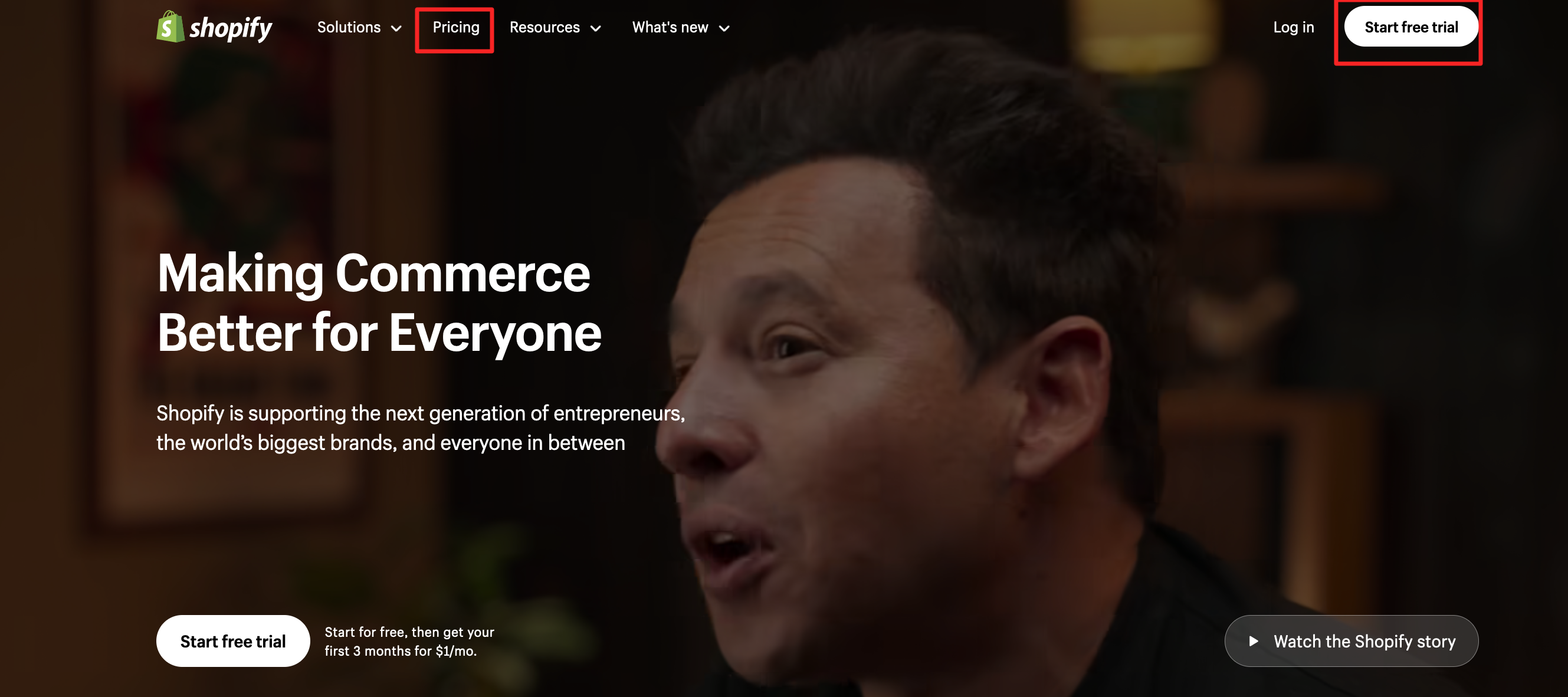To open a Shopify store you need to have a product or a service to sell, a computer (laptop or even mobile device – preferably a laptop), an internet connection, a domain name (you can use Shopify’s default subdomain but a custom domain name is more professional), a method to receive payments.
While you will configure a payment gateway option from within your Shopify admin, you need to ensure you can receive payments through that payment method.
Getting Started with your eCommerce Venture on Shopify

In the following sections I will delve into the meat and bones of setting your ecommerce on Shopify for success.
Before you set up your Shopify store, you need to have done your due diligence and spade work to have a successful ecommerce business.
Understanding Your Business Concept
This involves having a clear concept of your product and services and how to build a business model upon this to monetise it. Your ground work here involves answering questions such as:
- What products and services do I intend to sell?
- What will be my target market?
- What would be the target market segment (niche)?
- What does the competition look like in the current market landscape?
- What will be my unique selling point?
The good part with Shopify is that the platform caters to a diverse range of products and services.
You can literally make use of the Shopify ecommerce platform to sell almost anything from physical products such as handmade hand crafts, to virtual products such as events or downloadable products such as eBooks, etc.
Shopify is also popular for fashion and apparel businesses.
Consider: What Can I Sell Online As A Business
Market Research and Business Concept Validation
To succeed in your ecommerce venture you need to conduct a thorough market research with the aim of identifying competitors, analysing demand and uncovering potential challenges. Shopify has tools and resources for market research as well.
You can leverage these to gather important insights about the business you want to venture into. You can also make use of other tools such as Google Trends, Qualtrics- keywords and search/keyword trend tools such as SemRush and Ahrefs.
In this process, also make use of Shopify’s features for setting up test landing pages for prototyping so that you can make informed decisions to align your product/service offering with realistic needs of your target market.
Creating a Shopify Account
To get started with Shopify, visit www.shopify.com and click where it says “Pricing” or “Start Free Trial” as illustrated in the image below. The pricing link brings you to Shopify’s pricing and plans page.

The “Start Free Trial’ link takes you through the signup process. It’s useful to get to see Shopify’s pricing and plans and make informed decisions regarding working with the platform.
On the pricing page choose any plan that suits your needs.
How much does it cost to open a Shopify store?
Shopify Plans & Pricing
Plan | Paid Monthly | Paid Yearly |
|---|---|---|
Basic | $25 | $19 |
$65 | $49 | |
Advanced | $399 | $299 |
If you are interested in drop shipping, the Shopify Basic plan is a good place to start. The plan has sufficient features for running a drop shipping business.
Shopify is suited for businesses of all sizes, so you can start with a small plan and scale to a bigger plan seamlessly within the same platform.
Also remember to visit Shopify’s website for the latest plans and pricings – as these change from time to time.
Choosing Your Store Name and Domain
Shopify will create a publicly accessible subdomain for your digital store. However the best approach here is to connect your Shopify store with your custom domain. This is important for branding purposes.
You customers need to be confident that they are purchasing from your brand. Connecting your Shopify store with a custom domain ensures that your digital store URL contains – (or is based on) your brand name.
Your domain name must be short, memorable and brandable. Try by all means to avoid including characters such as hyphens (-) in your domain name as these introduce risks of spelling mistakes – complicating access to your store.
To register your domain name you can make use of Shopify‘s domain registration service, or external domain registration and hosting services such as Bluehost.
Customizing Your Shopify Store

The next part is to customise your store. First off, choose either a free or premium theme that aligns with niche and type of products.
You then need to customize the theme according to your colors and branding. Add your logo as well. Shopify’s themes are mobile friendly. This ensures that customers can access your digital store across desktop and mobile devices.
Add Products and Inventory Management
Having set up the theme and customized it, the fun part begins. Now add your product by uploading high quality images and writing clear ad accurate product titles and descriptions.
Setting Up Payment Gateways
The next part is to configure payment gateways. Shopify has over 100 payment gateway options. Settle for the ones that align with the location and typical preferences of your customers.
Usually a good mix of credit/debit cards and digital wallet payment options is recommended. Do your due diligence in checking the transaction fees associated with each payment option and how this impacts your pricing and business model.
Configuring Shipping Settings
You now need to configure shipping settings. Within your Shopify Admin you can create Shipping zones and Shipping rates that cater to the diver locations of your customers.
The good part with Shopify is that the platform integrates with a number of major shipping carriers which simplifies your ecommerce workflow and enables you to outsource shipping and focus on the core business and marketing.
With the steps above implemented, you then need to move into implementing your sales channels – you can leverage Shopify’s third party apps to integrate your Shopify inventory with social media platforms like Facebook and Instagram and various marketplaces like Amazon.
A multi-channel approach enables you to reach a wider audience and boost traffic and sales.
Growing and Scaling Your Business
To run and grow a successful ecommerce business you need to implement various marketing techniques such as SEO, pay per click advertising (PPC), strategic influencer collaborations, etc.
You do not have to do everything, find what works and invest more on that. Also execute a clear and transparent customer service driven by an efficient support service as well as fair returns and refunds policies and practices.
Leverage data and report insights to make informed decisions to grow and scale your business.
Shopify Frequently Asked Questions
Do you need money to start a Shopify store?
Yes. Shopify offers a free 14 day trial – $1 per month for the first 3 months for each plan.
Q: How do I start a Shopify store for beginners?
A: Visit www.shopify.com, sign up for a plan suited for your business, customize your store with a free or premium theme, add products, configure payment gateways and shipping, test then launch your store.
Q: How to start a Shopify drop shipping store?
A: Shopify has solid features and functions for drop shipping.
Sign up for a Shopify plan (Shopify Basic can do), set up your store and customise it, from Shopify’s app market install a drop shipping app such as Spocket – then go to your Spocket account dashboard and search for products that you need, add these to the import list, go back to Shopify store and import your drop shipping inventory, customise product titles and descriptions and implement your mark up on the price. Start marketing your products to get sales.
Q: How do I start an online store without inventory?
A: Drop shipping is the best way to run an ecommerce business where you sell products without inventory.
Final Thoughts
I hope the steps and insights shared above are helpful to just get you started on your ecommerce journey. Don’t forget that Shopify has a 14 free trial plus the offer to pay only $1 per month for the first 3 months of your subscription. Take advantage of this to get started right and start testing your business model as well as the features of Shopify.
All the best!


